One of the most confusing facets of international travel is the realm of travel adapters and converters. Knowing what to purchase, as well as which one to use and when it should be used, can feel like a guessing game. What is worse is that sales people don’t necessarily know what you need either. We are going to demystify adapters, converters, dual voltage, step-up converters, step-down converters, with a final mention on transformers.
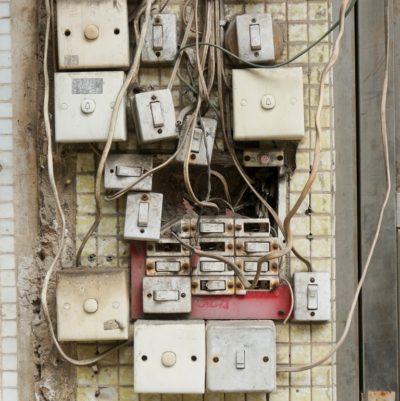
The world has as many as 15 different style of plugs and wall outlets. In the mid-1980s, the International Electrotechnical Commission (IEC) created a universal plug, type N, with hopes that the world would adopt a standard plug. Nice thought as this would have eliminated the need to travel with adapters. It wasn’t until twenty years later that Brazil first adopted the type N adapter.
Thailand has decided to create a whole new power outlet for their country and is still phasing it in. So much for standard plugs. For this reason, international travelers need adapters and sometimes converters. Let’s discuss both.
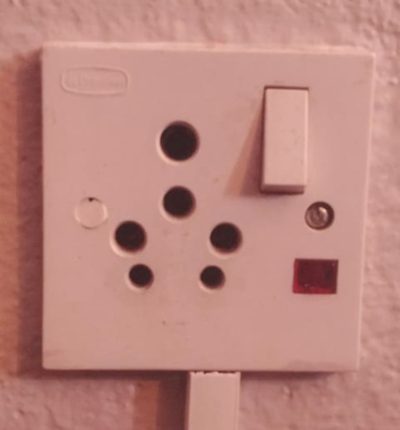
What is an adapter?
Because every country has to have their own type of outlet it becomes rather difficult to plug devices into a wall when traveling. A travel adapter fits the foreign outlet and attaches to your appliance’s plug.

Adapter labeling can vary. Some adapters are color coded or can be marked with a single alphabet letter that corresponds to the country. Others (like mine) have full names of countries. If I travel to North Ireland I will need a ‘G type‘ adapter. My charger cord will plug into the G adapter which then allows me to plug into the outlet.
To complicate matters, some countries use multiple outlet systems. A trip to Burma would require adapters: A, C, D, G, and I. The voltage is 230 V. The voltage is important and the reason why you sometimes need to travel with converters, as well as adapters.
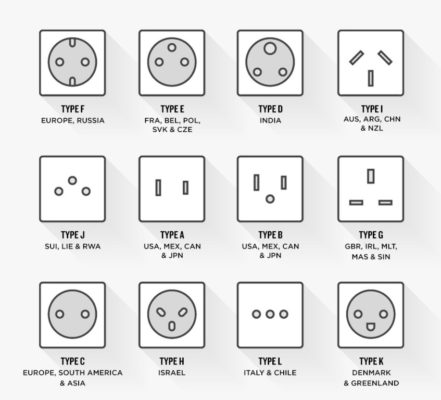
Why Does Voltage Matter?
The V at the end of 230V means voltage. This is the electrical force that drives an electric current and that force is measured in volts. Andrew asked if voltage and current were the same thing. It’s not. Voltage is the force and the current is how fast the electric charge flows. From a travel stand point, this is important because appliances can only handle the voltage force that they are designed for. Using a converter creates a uniform force (voltage) and flow (current).
What is a Converter?
Travel adapters are different than converters. A converter’s job is to change the voltage of your device to match the volts in the outlet at your destination. Different countries also use different voltages and frequencies of electricity. the United States uses 110/120 V. If you travel to Kenya their voltage is 240V. Don’t plug in an appliance that isn’t rated for that outlet’s voltage, it could be seriously damaged. Attach a converter and it safely create a uniform flow of volts.
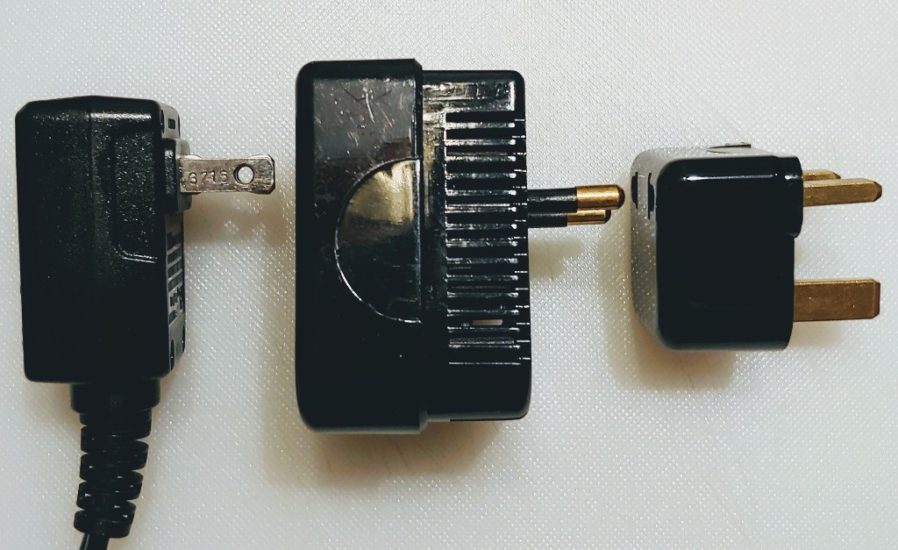
In summary, the adapter is to help plugs fit into foreign outlets and a converter’s job is to change the voltage to match an outlet. Easy right? Well there’s a few more complications before you decide what to purchase and pack.
Some Devices are Dual Voltage
What does this mean?
Dual Voltage means your electronic or electric device can be used at home and then switched to a different voltage when overseas. Most ‘specified’ travel devices, as well as electronics, are dual voltage.
Apple products, as well as most electronics, are dual voltage, therefore you do not need a converter, just an adapter.
How Can I tell if my device is Dual Voltage?
Look at the small lettering on your appliance or in the manual. Here you’ll find a myriad of information that you typically couldn’t care less about, unless you are traveling or need manufacturing information. In small letters, you will find the voltage listed. It will look something like this: “INPUT AC 120/240 V 50—60 Hz 1300 W.” The numbers, 120/240 V, means that the appliance is dual voltage. It can handle voltage anywhere from 120-240. The next step is to check your destination’s requirements. Use the button guide above to download a current list. If you are traveling to S. Korea (220V) and then continuing onto Nepal (230V). You’re covered. All you need is an adapter.
However, if what you read looks like this: “INPUT AC 120 VAC 60 Hz 200 W,” the appliance is not dual voltage it is single (120V). In this case you will need to use a converter and of course, an adapter.
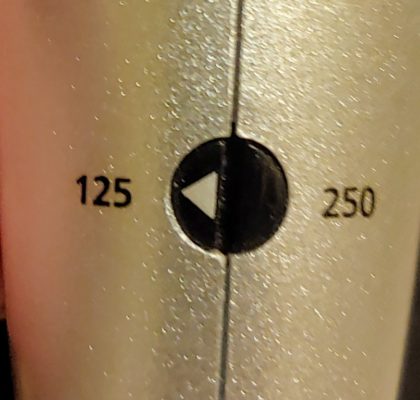
I have dual voltage listed, now what?
If you have dual voltage make sure you know how to switch between the two. Typically, it’s just a turn of a dial using a dime or credit card edge. All you need is an adapter and you’re good to go.
Should I purchase a Step-up or Step-Down Converter?
When shopping for converters you will notice that some advertise, “Step-Up” and others claim, “Step-Down”. This has to do with where you are traveling from and your destination. The main difference between a step-up and a step-down converter is that, a step-up converter increases the voltage whereas a step-down converter decreases the voltage. Most of the world operates on a higher, more efficient system than the United States.
Americans have to ‘step up’ their voltage to their destination. We need to convert 110V to 230V if we travel to Nepal. However, Nepali’s have to ‘step down’ when they come to the US. They need a converter that will reduce the output voltage for their appliances to work in our outlets.
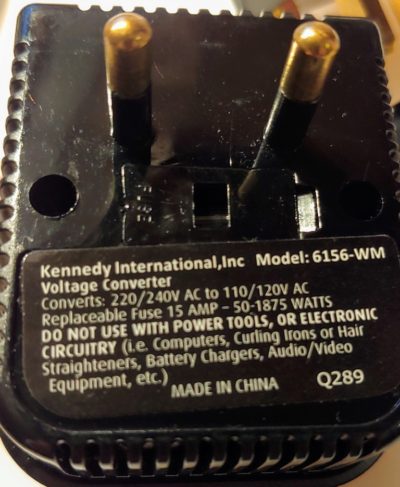
Always follow the instructions.
Sales People Make Mistakes Too!
It’s important to research and prepare well in advance of your trip. I was sold the wrong (above) converter by a AAA agent. Warning! A sales person works for a travel agency doesn’t mean they fully understand what they are selling. Just because the package is labeled ‘converter’ doesn’t make it the right one for you. This particular converter didn’t work for me overseas because it is a step-down converter. It should be used here in the US for foreign appliances. Read the small print! If you are traveling from the US you need a converter that states 110/120V to 220/240V. This particular converter wouldn’t work for an American traveling abroad. What I needed a step-up converter.
Converter or Transformer?
One more thing. When shopping for adapters and converters, you might notice the word transformer. The words converter and transformer are often used interchangeably on-line. A transformer operates just like a converter but it is larger and heavier. It looks like a miniature car battery. A traveler might use a transformer for medical equipment or heavy duty items.
You are now fully versed in travel adapters and converters! Check out our Favorite Travel Items for our adapter and converter suggestions.
We love comments and encouragement. Just remember: This is a safe site for children. If comments are not tastefully stated, they will disappear in a “POOF”!


